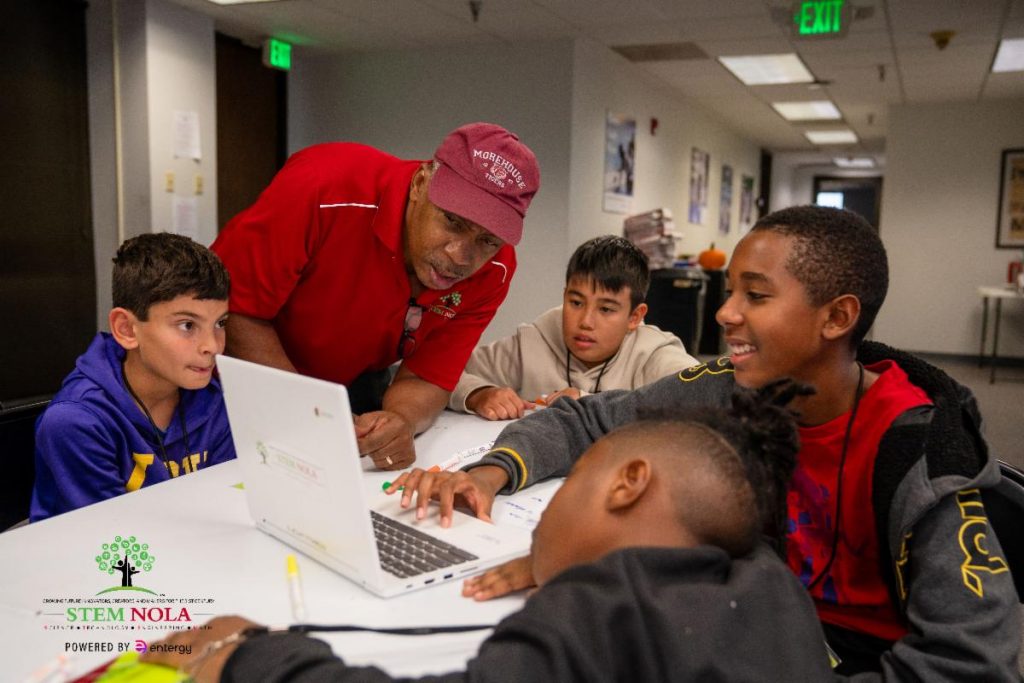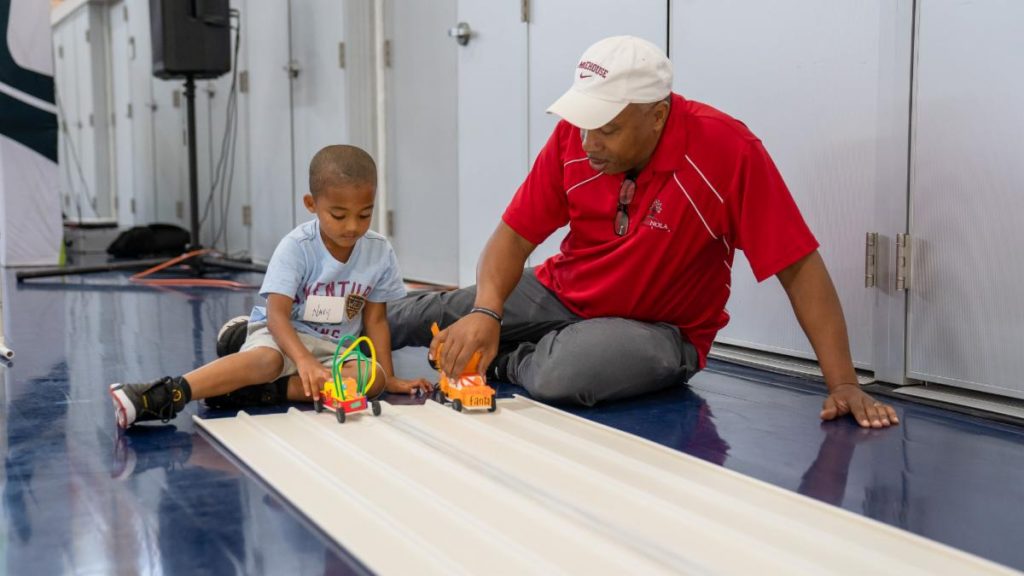RIVERSIDE, CA— April is National Child Abuse Prevention Month, a time to raise awareness and take action to protect children from abuse and neglect. In recognition of this, the County of Riverside, Family Service Association (FSA), and the HOPE Collaborative united on April 1st to raise awareness about child abuse prevention during a moving flag-raising ceremony held at the Riverside County Administration Center.
Now in its third year, the ceremony honored the lives of children lost to abuse, neglect, and violence. It also aimed to educate the community on recognizing signs of abuse and highlighted the collaborative efforts of various organizations dedicated to protecting children. Among those in attendance were representatives from local nonprofits, including the SAFE Family Justice Center, Barbara Sinatra Children’s Center, Boys and Girls Club, NORA, Childhelp, and many others who provide direct services to children and families in crisis.
More than 100 community members gathered to pay their respects to victims and demonstrate their collective commitment to creating a safer environment for children. Prominent figures including First District Supervisor Jose Medina, Second District Supervisor Karen Spiegel, and Sheriff Chad Bianco delivered powerful speeches emphasizing the importance of community involvement and child protection. County Executive Officer, Jeff Van Wagenen, emceed the event.
Katie Gilbertson, Regional Manager at the Division of Victim Services at the Riverside County’s District Attorney’s Office, stated “This month isn’t just about awareness. It’s about recognizing the quiet, often invisible suffering of children, and renewing our commitment to protect them.” With over 16 years of experience in child abuse prevention, Gilbertson serves as a Board Member for the HOPE Collaborative and has participated in forensic interviews, medical exams, court proceedings, and victim impact statements. She emphasized, “The work that we do in addressing child abuse is never easy. We are often exposed to some of the most evil acts that our community has to offer. Child abuse is one of the most insidious crimes that we can confront…and it often comes at the hands at the someone that a child deeply loved – a parent, a relative, or friend.”
Bridgette Hernandez, Assistant Director at the Department of Social Services Children’s Services, shared, “Our work is always centered on ensuring that children and families have the resources they need to thrive. Each year, we receive over 62,000 calls of abuse or neglect to our child abuse hotline and conduct roughly 22,000 investigations. However, our work goes beyond investigating allegations of abuse and neglect. Through our partnerships, we also focus on prevention by providing families with resources and supports to create safe environments and reduce life stressors.
Sheriff Chad Bianco added, “We are incredibly proud of our partners – whether they are nonprofit organizations or county agencies. When we encounter children in harm’s way, we know that they are placed in the capable hands of those who will protect and care for them.”
Investing in early childhood programs, expanding family resource services, strengthening behavioral health services, and improving interdepartmental coordination are key priorities in the County’s strategy to support families. Supervisor Jose Medina highlighted these efforts, stating, “When families have access to the right support and know where to go for help, they are better able to care for and protect their children. In District 1, we are seeing this take shape with the opening of the Franklin Residential Care Facility and Behavioral Health Clinic in Riverside and the Wellness Village in Mead Valley – a campus integrating housing, healthcare, and support services.”
As a founding member of the Board’s Committee on Systems Improvement for the Protection of Vulnerable Children and Adults, Supervisor Karen Spiegel emphasized, “I’ve often said it takes a village. We must work together to achieve the best outcomes for our children. Keeping them safe is a collective responsibility that requires the involvement of schools, businesses, law enforcement, government agencies, faith-based organizations, and, most importantly, parents themselves.”
The event highlighted the importance of collaboration in safeguarding children. In Riverside County, Family Service Association (FSA) serves as the designated Child Abuse Prevention Council (CAPC) known as the HOPE Collaborative. The HOPE Collaborative fosters ongoing engagement through monthly meetings across the county, bringing together professionals, parents, and volunteers from diverse backgrounds.
Stephanie Soto, Community Services Director, shared, “FSA strives to prevent child abuse, help families thrive, and build stronger communities. We partner with dozens of organizations to address the root causes of child maltreatment, such as poverty, lack of access to resources, and mental health issues. Through educational programs, awareness campaigns, and community outreach, we empower parents and caregivers with the knowledge and skills they need to raise healthy and happy children.”
The successful flag-raising ceremony served as a powerful reminder of the collective responsibility to protect children. The event concluded on an uplifting note with a special performance by second-grade students from Jackson Elementary School in the City of Riverside, who sang It’s Gonna Be a Good Day, leaving attendees inspired and hopeful for the future.
The HOPE Collaborative encourages community members to attend future events and get involved. For more information, contact the HOPE Collaborative by calling 951-369-8036 or by visiting its website at www.hopecollaborative.org.
If you suspect that a child is experiencing abuse or neglect, report it by calling the confidential 24-hour, 7-day-a-week hotline at 1-800-442-4918. Your voice can make the difference for one child.
About the County of Riverside:
The County of Riverside has approximately 40 departments serving more than 2.4 million residents. Services ranging from public safety, health and human services, public works and community services, as well as budget and finance. The county serves approximately 1 million residents a year through its human services departments to ensure residents have critical resources and support.
About Family Service Association:
For over 70 years, Family Service Association has addressed poverty, hunger, and health, from infancy to older adults, in families and under-served communities. Through early education, trauma-informed mental health services, obtainable senior housing, support for home-bound individuals, safe senior/community centers, and nutritious meals for older adults, FSA’s team members serve over 21,000 community members each year. FSA also lead’s the County’s Child Abuse Prevention Council, The HOPE Collaborative.
About HOPE Collaborative:
Facilitated by Family Service Association, The HOPE Collaborative serves as Riverside County’s Child Abuse Prevention Council. With a focus on interagency collaboration, community awareness, education, policy advocacy, and mandatory reporter training, the HOPE collaborative works closely with law enforcement, school districts, non-profits, medical providers, mental health professionals, faith-based groups, community advocates, and the department of public and social services towards the prevention of child abuse and neglect in Riverside County.
 Westside Story Newspaper – Online The News of The Empire – Sharing the Quest for Excellence
Westside Story Newspaper – Online The News of The Empire – Sharing the Quest for Excellence

